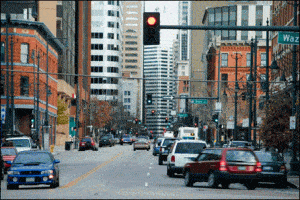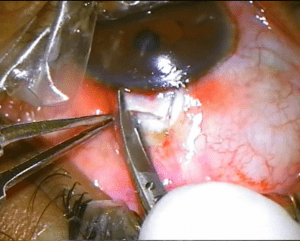Glaucoma Rx
 Overview of glaucoma
Overview of glaucoma
Glaucoma is the name for a group of eye diseases that damage the optic nerve. This nerve carries information from the eye to the brain. When the nerve is damaged, you can lose your vision.
Glaucoma is one of the most common causes of legal blindness in the world. At first, people with glaucoma lose side (peripheral) vision. But if the disease isn’t treated, vision loss may get worse. This can lead to total blindness over time.
There are three types of glaucoma.
Open-angle glaucoma (OAG) is the most common form.
Closed-angle glaucoma (CAG) can happen suddenly and be a medical emergency.
A congenital glaucoma is a rare form of glaucoma that some infants have at birth.
 Glaucoma can be diagnosed:
Glaucoma can be diagnosed:
During routine exams with your eye doctor.
When you go to your family doctor because of an eye problem. Your doctor will ask you questions about your symptoms and do a physical exam. If your doctor thinks you have glaucoma, you will then need to see an eye doctor for the eye.
Glaucoma – Exams and Tests
Early detection and treatment of glaucoma are important for controlling the condition and preventing blindness.
A doctor evaluating possible glaucoma will take a medical history and do a physical exam. If your doctor suspects glaucoma, he or she will refer you to an eye specialist (ophthalmologist).
The eye specialist will check your eyes to help find out if you have the disease and how severe it is. He or she will look for certain signs of damage in the eye by checking things like:
Eye structure. Ophthalmoscopy, gonioscopy, slit lamp exam, and optic coherence tomography all check the structures of the eye.
Eye pressure. Tonometry measures the pressure in the eye (intraocular pressure, or IOP). Vision tests. These include tests to check for visual acuity and loss of side and central vision (perimetry testing).
Cornea thickness. Tests such as ultrasound pachymetry measure the thickness of the clear front surface of the eye (cornea). Cornea thickness, along with intraocular pressure, helps determine your risk for glaucoma.
After glaucoma is diagnosed, eye exams are done on a regular basis to monitor the disease.
Your doctor may also do a low-vision evaluation to help find ways you can make the most of your remaining vision and maintain your quality of life.
Early detection
If you are younger than 40 and have no known risk factors for glaucoma, the American Academy of Ophthalmology (AAO) recommends that you have a complete eye exam every 5 to 10 years. This includes tests that check for glaucoma.2 The AAO suggests more frequent routine eye exams as you age, even if you aren’t at increased risk for glaucoma.
Glaucoma – Surgery
Surgery reduces the pressure in the eyes by opening blocked drainage angles or creating a new opening that fluid can flow through to leave the eye. In some cases, surgery may be done to relieve pain caused by glaucoma.
Medicine will usually be tried before surgery is considered.
Doctors can use either a surgical cutting tool or a very focused beam of light, called a laser, to do surgery for glaucoma. Laser surgery is usually the first type of surgery tried. If laser surgery doesn’t help, your doctor may try conventional surgery.
It is not unusual for some people to have both open- and closed-angle glaucoma. They may need more than one kind of procedure.
Surgery choices for adults
There are three basic types of surgery for glaucoma in adults.
Surgery to increase drainage of fluid from the eye
This type of surgery involves making a trapdoor that allows fluid to drain from the eye.
- Trabeculectomy involves an incision to remove a piece of tissue to allow fluid to drain from the eye.
- Tube-shunt surgery (seton glaucoma surgery) involves an incision to place a tube in the eye to allow fluid to drain.
- Laser trabeculoplasty burns tissue to create an opening that allows fluid to drain from the eye.
- Laser sclerostomy removes a piece of the white part of the eye to allow fluid to drain. This type of surgery is rarely done.
Surgery to prevent the closure of the drainage angle
These procedures involve making a new opening in the colored part of the eye (iris) that allows fluid to flow through the eye. They are used to treat sudden (acute) and long-term closed-angle glaucoma. The procedures also will prevent closed-angle glaucoma in people who have narrow drainage angles.
- Surgical iridectomy uses a surgical cutting tool.
- Laser iridotomy uses a laser.
Laser iridotomy can usually be done instead of surgical iridectomy. But some people with complicated or severe glaucoma may need to have surgical iridotomy.
Surgery to decrease the amount of fluid produced in the eye
When other surgery fails to improve the flow of fluid from the eye, procedures to destroy the part of the eye that produces fluid (ciliary body) can be done. These procedures are also used when scar tissue has formed after a previous surgery.
Surgery choices for children
For congenital glaucoma, there are two slightly different procedures that both attempt to open the drainage angle directly. They are equally successful in children, but they are not used for adults. If these procedures fail in a child, then trabeculectomy or tube-shunt surgery may be tried.
- Goniotomy creates an opening in the trabecular meshwork to allow fluid to drain from the eye.
- Trabeculotomy removes a piece of tissue to allow fluid to drain from the eye.
Your Eye Care Starts Here
Better Eye Care is Our Mission
24/7 service. Same Day Appointments are Available.


